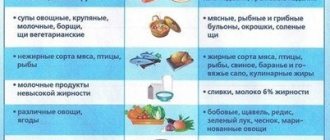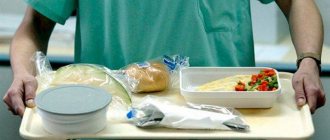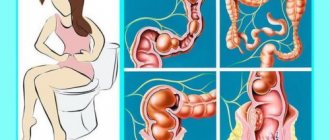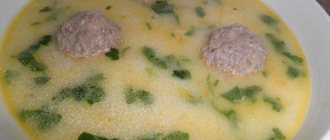Peptic ulcer is a chronic pathology, which is characterized by the appearance of defective formations on the mucous membrane of the organ. In the initial stages, therapy occurs with medications. If this does not give a positive effect, the patient is prescribed surgical treatment for a stomach ulcer. The operation is performed urgently if the patient experiences internal bleeding or breakthrough of a defective formation.
Today, several types of surgical measures are used to treat peptic ulcer disease. Let's look at cases in which gastric ulcer surgery is necessary and tell you how the procedure is performed.
Indications
Indications for surgical treatment of peptic ulcer have absolute or indirect significance. Absolute indications for surgery are conditions like:
- Perforation of an ulcerative lesion into the abdominal cavity;
- Intense and difficult to stop bleeding;
- Penetration, in which the ulcerative formation spreads to adjacent tissues and walls of nearby organs;
- Narrowing of the muscular outlet valve of the gastric pylorus;
- Long-term non-healing ulcerative formation with suspected malignancy.
If the patient’s condition with a peptic ulcer is assessed as moderate, then a 3-month course of drug therapy is indicated. If it does not bring the expected effect, then the ulcer sufferer is prescribed surgical removal of the ulcer.
Typically, indications for intervention in this case are frequent pathological relapses or the callous nature of the lesion, bleeding that is difficult to stop, the risk of complications, or the healing of ulcerative lesions with any complex defects.
Most often today, in case of ulcerative pathology of the gastric organ, suturing or resection of the stomach is performed. And in case of ulcerative pathology of the duodenum, vagotomy is indicated.
Complications of ulcers
If left untreated, complications may develop. There are 5 conditions that threaten the patient if the ulcer is not treated:
- Perforation of an ulcer is a perforation of the stomach wall through.
- Bleeding - if the integrity of the blood vessel in the walls or at the bottom of the ulcer is damaged.
- Stenosis of the pyloric region of the stomach is a narrowing of the outlet of the stomach, accumulation of food there.
- Penetration of an ulcer is the perforation of an ulcer into a neighboring organ.
- Malignancy of an ulcer is the growth of a malignant tumor.
Contraindications
If the patient has a life-threatening condition that requires urgent intervention, then the only contraindication is the agonal state of the ulcer.
If the operation is planned as planned, then the following may be contraindications for it:
- Acute infections;
- In the presence of decompensated chronic concomitant pathologies;
- If the general condition of the patient is characterized as serious;
- With a malignant nature of the ulcer with distant metastases.
In each case, specialists make a decision regarding the need for surgical intervention individually and taking into account the indications.
Important
- We should not forget that a stomach ulcer affects the functioning of the entire body, and therefore it is better to prevent this disease than to then adapt to it all your life, easing the pain with medications.
- Attacks can be prevented by following a diet and proper nutrition, giving up alcohol and cigarettes. You should visit a doctor at least once a year. For preventive purposes, patients are prescribed antiulcer medications in courses in spring and summer. It is at this time that the disease makes itself felt with the most striking manifestation of symptoms.
- It is also necessary to remember for patients suffering from peptic ulcer disease about annual endoscopic monitoring, which must be completed even in the absence of pain after the ulcer has healed. The need for such control is associated with the high probability of malignancy of gastric ulcers.
Author of the article: Tryapitsyn Alexander Valerievich (gastroenterologist, candidate of medical sciences)
Preparation
Before surgical treatment of gastric ulcers, the patient undergoes a gastrointestinal cleansing, during which all intestinal contents are evacuated. In case of blood pressure disorders, preoperative preparation also involves the elimination of hypovolemic manifestations.
The duration of preparation for surgery is determined by the patient’s condition, and intervention tactics are selected based on data obtained during diagnosis after the location of the ulcerative lesion has been established.
When selecting the type of surgical intervention, the specialist must take into account the time that has passed since the development of the ulcerative defect, the prevalence and severity of peritonitis, the localization and origin of the ulcerative formation, as well as technical capabilities.
If the patient has an emergency condition with perforation of an ulcerative lesion, then preoperative preparation is not carried out, because there is no time left for it. Surgery is performed immediately after the ulcer is delivered to the surgery department.
If the surgical intervention is planned in advance, then a number of preparatory procedures are carried out, which include:
- Clinical, laboratory, detailed blood tests;
- Diagnosis of feces for occult blood;
- pH-metry aimed at assessing acid-forming gastric function;
- X-ray diagnostics;
- Endoscopic examinations;
- Obtaining a biopsy sample from the tissue surrounding the ulcerative defect, which is sent for histology;
- Electrogastroenterographic study;
- Tests for the detection of Helicobacter;
- Antroduodenal manometry aimed at identifying pathological structural changes in the motility of the gastroduodenal gastrointestinal tract.
Not all of the above diagnostic techniques are applied to patients; sometimes some of them are not carried out due to the lack of necessary equipment or in cases where there is no need for these studies.
Treatment after surgery (postoperative therapy)
The goal of postoperative therapy is to normalize the patient's condition: creating optimal conditions for healing of the operated ulcer, restoring gastrointestinal functions, preventing postoperative complications.
Treatment after surgery for a perforated ulcer depends to a certain extent on the following factors:
- complexity of the operation;
- condition and age of the patient;
- the nature of the ulcerative defect that caused perforation;
- time elapsed from perforation to surgery.
Postoperative therapy includes:
- Continuous or periodic (morning and evening) drainage of the stomach for several days after surgery until gastrointestinal motility is restored.
- General antibacterial therapy using broad-spectrum antibiotics. Directed, among other things, against Helicobacter pylori.
- Suppression of gastric secretion with medications to speed up wound healing.
- Postoperative infusion therapy (introduction of necessary substances into the bloodstream).
- Prescription of early postoperative nutrition.
And other necessary measures.
Thus, treatment after surgery for a perforated ulcer consists of a set of necessary measures that affect both the body as a whole and a set of measures that make up antiulcer therapy.
If complications were avoided, then the patient’s further recovery largely depends on strict adherence to the diet.
Types of operations for stomach ulcers
Modern surgery has several surgical methods for treating gastric ulcers. These include vagotomy and resection, endoscopy and laparoscopy, laser cauterization or suturing of the organ, etc.
Suturing
This method of surgical intervention has an undoubted advantage - palliation, therefore, after such an operation there is a minimum of complications. The main indication for gastric suturing is ulcerative perforation.
- First, the stomach is completely cleared of its contents by suction with a suction device.
- Then the stomach cavity is dried with surgical gauze napkins. To easily detect the perforation area.
- The affected area is sutured with a suture using the seromuscular technique, with the suture positioned transverse to the gastric axis. This suture technique prevents narrowing of the pyloric lumen and helps preserve the natural shape of the organ.
- The affected areas of the stomach are removed entirely.
The suturing technique is indicated in the presence of diffuse peritonitis, the development of inflammation more than 6 hours ago, patients of retirement age, the presence of concomitant pathologies or acute symptoms of gastric ulceration.
Resection
Such an intervention can be partial or complete and is usually used when malignancy of the ulcerative process is detected. This intervention has a number of disadvantages, such as high trauma and a lot of contraindications, a huge risk of complications and a long postoperative recovery.
Also, after gastrectomy, it is necessary to strictly adhere to dietary requirements and completely abandon physical activity.
Resection can be of different types, which involve removing the affected lesions using various techniques and with the imposition of a connecting section between the duodenum and the remains of the gastric organ.
There are the following types of resection:
- Antrumectomy with excision of gastric pyloric tissue;
- In case of excessively high acidity, excision of 2/3 of the organ’s lobes;
- Longitudinal resection with excision of the lateral part of the gastric organ;
- Gastrectomy with almost complete removal of the stomach;
- Removal in a subtotal manner is used in the absence of a therapeutic effect using conservative methods of treatment.
Typically, an intervention of this kind lasts no more than three hours; if there are no complications, then after the operation on the 7th day the patient can sit in bed, and after 10 days he can get up. It will take at least a year to fully recover after resection.
Approximately 3 years after resection, the patient undergoes repeated diagnostics, the purpose of which is to assess the effectiveness of the surgical intervention.
Vagotomy
If we compare vagotomy with resection, the first method of surgical intervention has a much lower risk of mortality. Thanks to such an intervention it is possible to achieve:
- Decreased secretion of gastric juice;
- Prevention of severe complications;
- Reducing the frequency of relapses of pathology;
- Keep the organ intact.
During such an intervention, the surgeon removes the vagus nerve, which is responsible for motility and the activity of the secretory gastric glands. Vagotomy is performed for long-term chronic course of ulcerative pathology.
Laser cauterization
A fairly common method of minimally invasive treatment of gastric ulcers today is laser cauterization.
A rubber tube is inserted into the patient through the oral cavity, as during a conventional diagnostic FGDS. Then the specialist performs cauterization. This procedure is carried out about 7-10 times, only after this can one hope for recovery.
This procedure is contraindicated for bleeding ulcers, feverish conditions and acute surgical pathologies. Also, such cauterization is not carried out in case of bleeding disorders, malignant neoplasms in the stomach cavity and circulatory failure.
In general, laser therapy allows one to achieve stable and long-term remission, almost completely relieving the patient of the ulcer.
Symptoms of peptic ulcer disease in the presence of an ulcer
- Symptoms of the disease usually appear quite clearly, which makes it possible to promptly identify the disease and begin appropriate treatment. The main symptom is pain
, depending on the nature of the pain, you can understand where exactly the ulcer is localized. The timing of pain is also important. Peptic ulcers with localized ulcers in the stomach are characterized by so-called “hunger pains” that appear on an empty stomach, as well as several hours after eating.
- If the cardiac part of the stomach is affected (it is adjacent to the esophagus), then pain occurs closer to the solar plexus 20 minutes after eating. Often the pain extends to the chest in the area of the heart, which can be confusing and cause a misdiagnosis such as a heart attack when trying to self-diagnose. Such localization of a peptic ulcer is never accompanied by pain after physical activity.
- Ulcer damage to the pyloric part of the stomach (closer to the duodenum) causes prolonged acute pain, manifested in attacks. Sometimes the duration of one attack can be more than 40 minutes. The pain develops an hour after eating. May occur at night. Dyspeptic symptoms often occur: nausea, feeling of bloating, vomiting. The ulcer of this localization is 5-10% malignant. Complications such as penetration, perforation, bleeding, and pyloric stenosis due to cicatricial deformation are also common.
- 10-15% of ulcers are localized in the antrum, located between the pyloric and cardiac. Moreover, if the defective formation is located in the lesser curvature of the stomach, the patient will feel severe pain in the left hypochondrium 1-1.5 hours after eating. Stabilization of the condition occurs after the contents of the stomach are digested. Most of these patients experience pain in the evening.
- An ulcer localized in the greater curvature of the stomach is characterized by a less pronounced clinical picture; it occurs less frequently, more often in the elderly, and in 50% of cases it is malignant, and such an ulcer is quite difficult to detect.
- Continuous aching pain, experienced mainly in the evening and at night, may indicate the location of a defective formation in the antrum. In this case, the pain syndrome does not correlate with food intake.
- The nature of pain with a duodenal ulcer is characterized by the fact that it appears 1.5-2 hours after eating, often at night. This location of the ulcer is more common in men under 40 years of age. The genetic factor is more significant for this category of patients. Dyspeptic disorders are less common than when localized in the stomach, but quite often patients are bothered by constipation.
Rehabilitation, how long do they stay in the hospital?
After surgery, long-term treatment with antiulcer drugs is required. In the first 3 days, it is forbidden to eat food or drink any liquids.
All nutrients are administered to the patient through the veins using a dropper. The patient is on bed rest, but from the second day after the intervention you can do breathing exercises, which are taught by nurses in the hospital.
After about a couple of weeks, the patient is discharged from the surgery department. Patients usually need about a year to fully recover. Surgical treatment of ulcers requires registration of the patient and long-term follow-up after the intervention.
What can you eat after removal?
Diet therapy, which is prescribed to ulcer sufferers for the rest of their lives, is very important after surgical treatment of peptic ulcer disease.
- From about 4-5 days, the patient begins to be given broths and jelly, pureed vegetable soups and semolina, cottage cheese and pureed lean meat.
- Meals need to be organized in fractional, small portions, 6 times a day.
- The basis of the diet is steamed or boiled semi-liquid dishes.
- Patients must chew each piece thoroughly.
- The temperature of the food consumed should not exceed 50-55 degrees, but cold food with a temperature below 15 degrees should not be eaten either.
- You can eat steamed omelettes and soft-boiled eggs, cod and oatmeal broth. It is recommended to drink jelly and rosehip decoction.
Fried and smoked, fatty and spicy, canned foods, foods with a lot of fiber (white cabbage, turnips, radishes, etc.) are prohibited for ulcer sufferers. It is better to eat fruits after heat treatment in the form of compote or fruit jelly.
Other signs of a stomach ulcer
In addition to pain, the following signs may also indicate the presence of a peptic ulcer:
- Nausea,
sometimes accompanied by vomiting. This occurs due to impaired gastric motility. If there is an ulcer, vomiting may begin 2 hours after eating. - Heartburn
. Most patients suffer from this symptom, which manifests itself as a burning sensation in the epigastric region. With heartburn, the acidic contents of the stomach end up in the lumen of the esophagus, which is accompanied by a rather unpleasant sensation. - Feeling of heaviness in the stomach
. It is observed after eating, regardless of the amount eaten. - Poor appetite.
The symptom is associated with the fear of heartburn and vomiting, which torment the patient after eating. This is a psychological factor that explains the deterioration of appetite by the patient’s desire to avoid unpleasant sensations. - Belching of air
can also be accompanied by the reflux of stomach contents into the oral cavity, after which an unpleasant sourish or bitterish taste remains in the mouth. - Increased gas formation
.
Patients often complain of constipation caused by intestinal dysfunction. Atypical symptoms include a white coating on the tongue, sweaty palms, and pain when pressing on the abdomen. Sometimes the ulcer does not manifest itself with any symptoms, in which case it can be found in a rather advanced state.
Consequences
Although surgical treatment of peptic ulcer is carried out for special indications, it can be complicated by some unpleasant conditions. Immediately after surgery, patients may experience bleeding, inflammation, or suture dehiscence.
Later complications include:
- Dumping syndrome, in which food entering the stomach passes through it too quickly and unprocessed enters the intestines;
- Reflux gastritis of the alkaline type, in which food masses from the duodenum are thrown back into the gastric cavity, which irritates and damages the mucous membranes, provoking the development of gastritis in the resected gastric organ;
- The adductor colon, which is a complication of gastric resection, is manifested by evacuation disorders of intestinal functions;
- Anemia or intestinal dyspepsia syndrome, secondary pancreatitis and hernia processes, adhesions, etc.
Typically, early complications are determined by the quality of the surgical intervention performed and the skill of the operating doctor. As for the patient himself, to minimize the risk of complications, you need to strictly follow the doctor’s recommendations after surgery, follow the diet and physical activity requirements.
Rehabilitation period
After the procedure, the patient remains in the hospital for some time. The length of stay depends on the type of ulcer surgery and the patient’s well-being. To reduce the risk of side effects, drug therapy is prescribed.
During the postoperative period, the person remains under the supervision of doctors for a week. During this time, the sutures heal, after which they are removed. Upon discharge, the doctor gives the patient a leaflet indicating the diet. You need to follow it for at least two weeks (depending on the type of operation, the period may increase or decrease). The patient is recommended to eat liquid soups and viscous porridges. The main condition is room temperature of the food. Portions should be small (glass capacity).
In the first week, any physical activity is prohibited, after which light activity is gradually introduced. The postoperative period includes the patient's release from work; the duration is determined depending on the type of operation. If a complete gastrectomy has been performed, the person is assigned a disability group.
Under no circumstances should you eat cold or hot food. It provokes various complications after surgery.
Possible consequences
Typically, consequences arise if the patient does not follow medical instructions or seeks help too late.
The main complications include:
- postoperative internal bleeding;
- infection or suture dehiscence;
- indigestion: undigested food goes straight into the intestines;
- violation of organ motility;
- adhesive disease;
- acute pain after surgery persists, this indicates a failed surgical intervention;
- peritonitis.
After surgery for a stomach ulcer, you must follow all the requirements and recommendations of the attending physician, in which case recovery is successful. Be sure to follow the prescribed diet, this will help avoid complications and the body will quickly return to normal. If you feel worse, contact a medical facility.
Which patients require surgery?
Surgery for gastric ulcers is primarily indicated when there is a threat to the patient’s life.
As for planned operations, every doctor’s decision must be carefully considered in advance. If there is even the slightest opportunity to limit yourself to conservative methods, then they are worth resorting to.
The patient is informed in advance about how the treatment is going, how long it takes for the rehabilitation period, and what consequences there may be.











